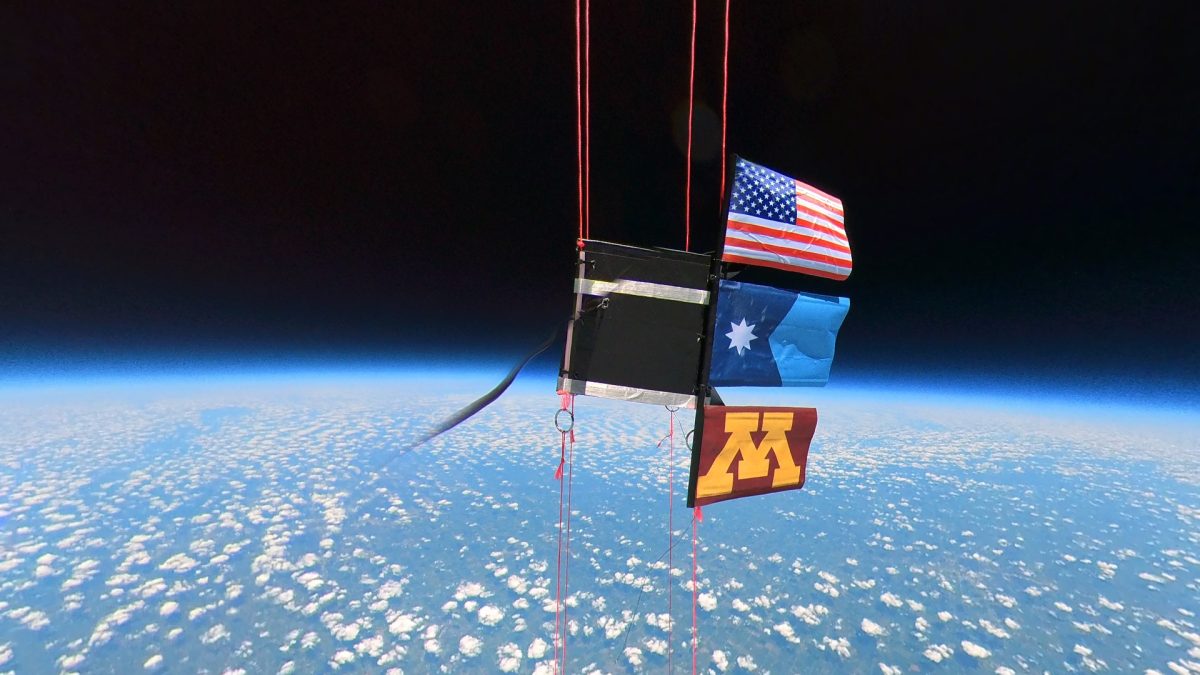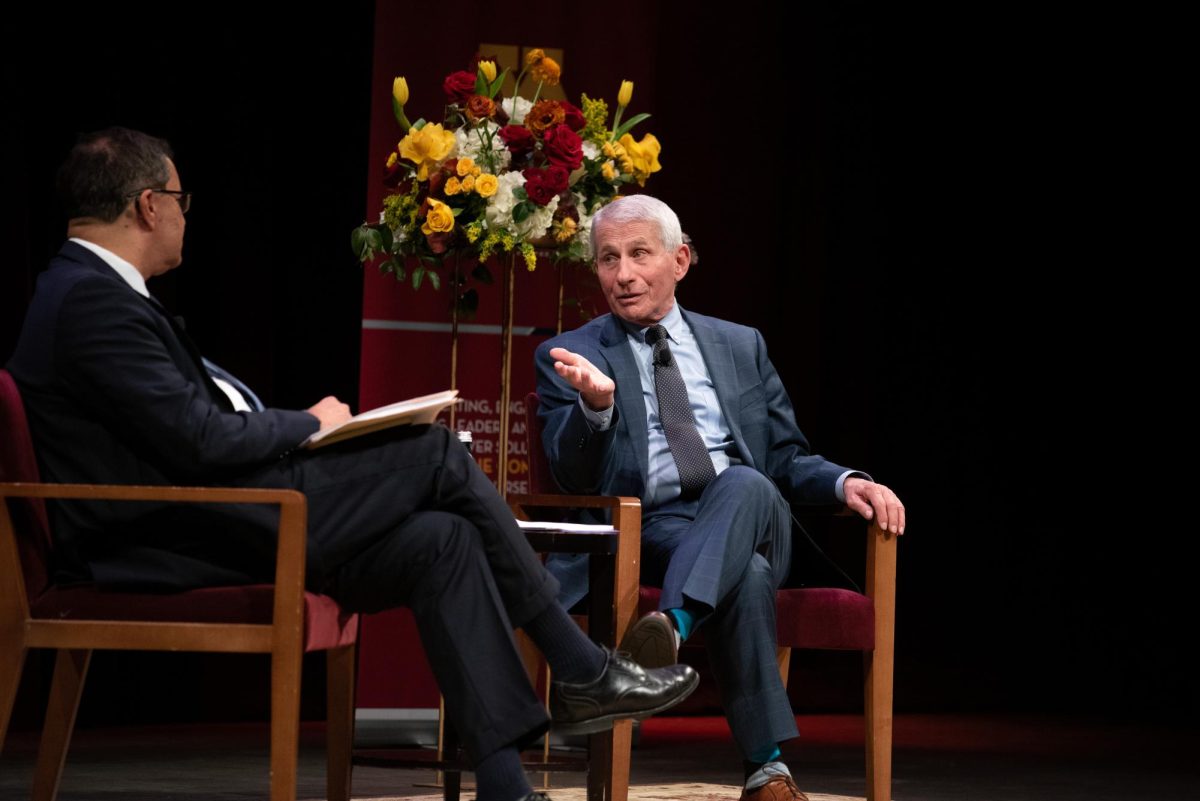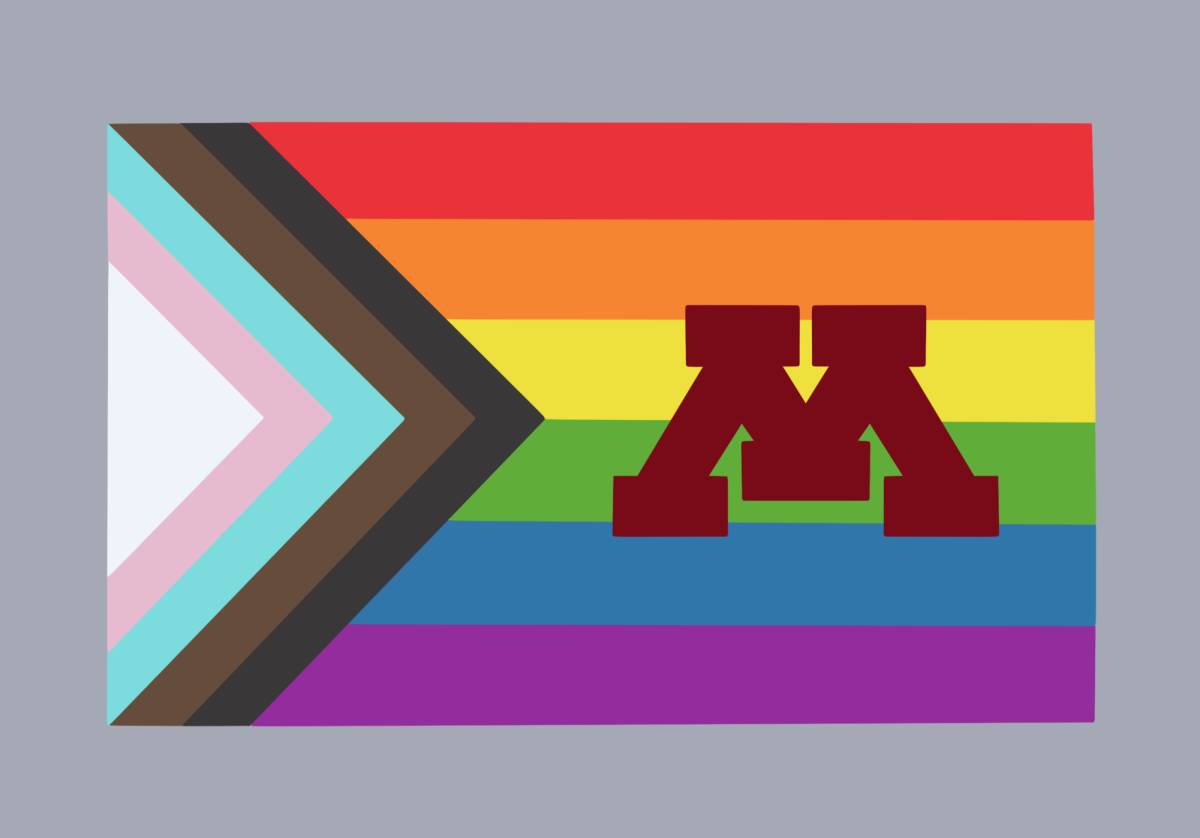A team of engineers from the University of Minnesota sent the new Minnesota state flag into space on July 17.
The experiment tested how certain fabricated materials, which engineers foresee being used in next-generation spacecraft and satellites, interact with outer space, according to lead engineer Ognjen Ilic.
The new state flag was sent along with the University and United States flags. However, researchers are more interested in what is on the other side of the flag, according to University Department Head of Mechanical Engineering Chris Hogan.
The other side of the flags hold nanoscaled fabricated material — a material whose chemistry and surface properties have been textured at the nanometer scale, Hogan said. A nanometer is a unit of measurement worth one billionth of a meter.
Hogan said by tailoring the material in this way, researchers can control how it interacts with electromagnetic radiation, or how it absorbs, scatters and transmits light of different wavelengths, which affects its power to propel a spacecraft.
Normally for propulsion in space, an energy system is needed on board the spacecraft, such as an engine, Hogan said. The fabricated nanomaterial would function like a sail by catching solar radiation and pushing the spacecraft along without needing an energy system on board.
Ilic said the team’s data will measure how nanofabricated material behaves in conditions of much higher radiation and stronger sunlight than can be tested in any lab, specifically looking at the material’s endurance.
“How would they resist the environment while being very lightweight and very very strong?” Ilic said.
Ilic and his team created the fabricated nanomaterial at the University’s Minnesota Nano Center. The center is a research facility offering equipment that can create patterns at the scale of a nanometer and make complex structures at the nanoscale, according to the center’s Director Steven Koester.
Koester said the facility is open to researchers both from the University and those outside it. However, people who want to use the Center must be qualified and have completed training to ensure they know how to use the equipment.
Ilic said this flight into space is the culmination of a bigger process that includes designing the material, running simulations, lab work, actual fabrication of the material, assembly and the final launch.
“There’s always challenges along the way,” Ilic said. “But we were very happy with the data that we got.”
Ilic said he and his team are in the process of writing a paper about this research, which he hopes to publish within the next six months.
Hogan said he hopes and assumes this is not the only time the University Department of Mechanical Engineering conducts this work.
“This is something that we can pull off, that students at all levels can get involved in,” Hogan said.



















